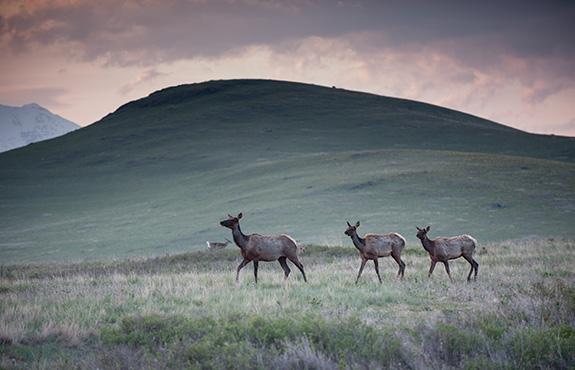Hold the Line
Protecting our public land.
Public lands are getting a lot of attention these days, and not for good reasons. Our incredible conservation legacy is more threatened now than it has been in decades. These are the mountains, forests, foothills, and prairies where Montanans go to hike and hunt, fish and watch wildlife, ride bikes and ATVs.
We’re facing numerous bills in Congress that would undue decades of conservation work to protect wild places, and other measures that led to large scale sell-offs of our public lands.
But there are also positive, time-tested measures that work to build on the decades of work we’ve done to protect our public lands, as well as the abundant wildlife and clean water that comes from them. Among the most important is Habitat Montana. This program uses a small fee on big-game hunting licenses to conserve key wildlife habitat. The funding can be used for conservation easements of private farm and ranch lands to protect winter range and habitat for other wildlife species; for fee title purchases to buy lands that are deemed essential for wildlife, and for fishing access sites to improve public access to public lands and waters.
Habitat Montana had been curtailed in the 2015 Legislature, which barred land purchases that weren’t already in the works. But a coalition of sporting organizations led by the Montana Wildlife Federation in 2017 worked to get Habitat Montana fully restored. It took a strong team effort that brought together sportsmen’s groups, conservation organizations, and land trusts to get the restrictions lifted on our premier state-based land-protection program.
On the federal level, the Land and Water Conservation Fund has helped purchase and protect key lands for over five decades. The program uses a portion of the royalties from offshore oil and gas drilling to fund habitat projects and recreational facilities. The LWCF has been an incredible success, and has touched almost every county in the nation. It pays for city parks, campsites, and land purchases to help “block up” public lands—buying isolated parcels of private land that adjoin public land. This helps unify blocks of wildlife habitat, improve public access to public lands, enhance land management, and ultimately lead to better outcomes for the public and landowners. The LWCF serves as our major public-access program.
The protection of the LWCF is a contact need. By contacting Montana’s senators and representative, you can send the message that the public values this program and the public benefits it has for wildlife, people, and landowners.
Montana is at a crossroads, but by sending the message to our congressional delegation, state legislators, and other elected officials that Montanans value these places, we can push back and continue to protect our public lands.
To stay up to date on current issues and bills surrounding public land and wildlife, go to montanawildlife.org and sign up for our email list by clicking on “get involved.”
Nick Gevock is the conservation director for the Montana Wildlife Federation.











